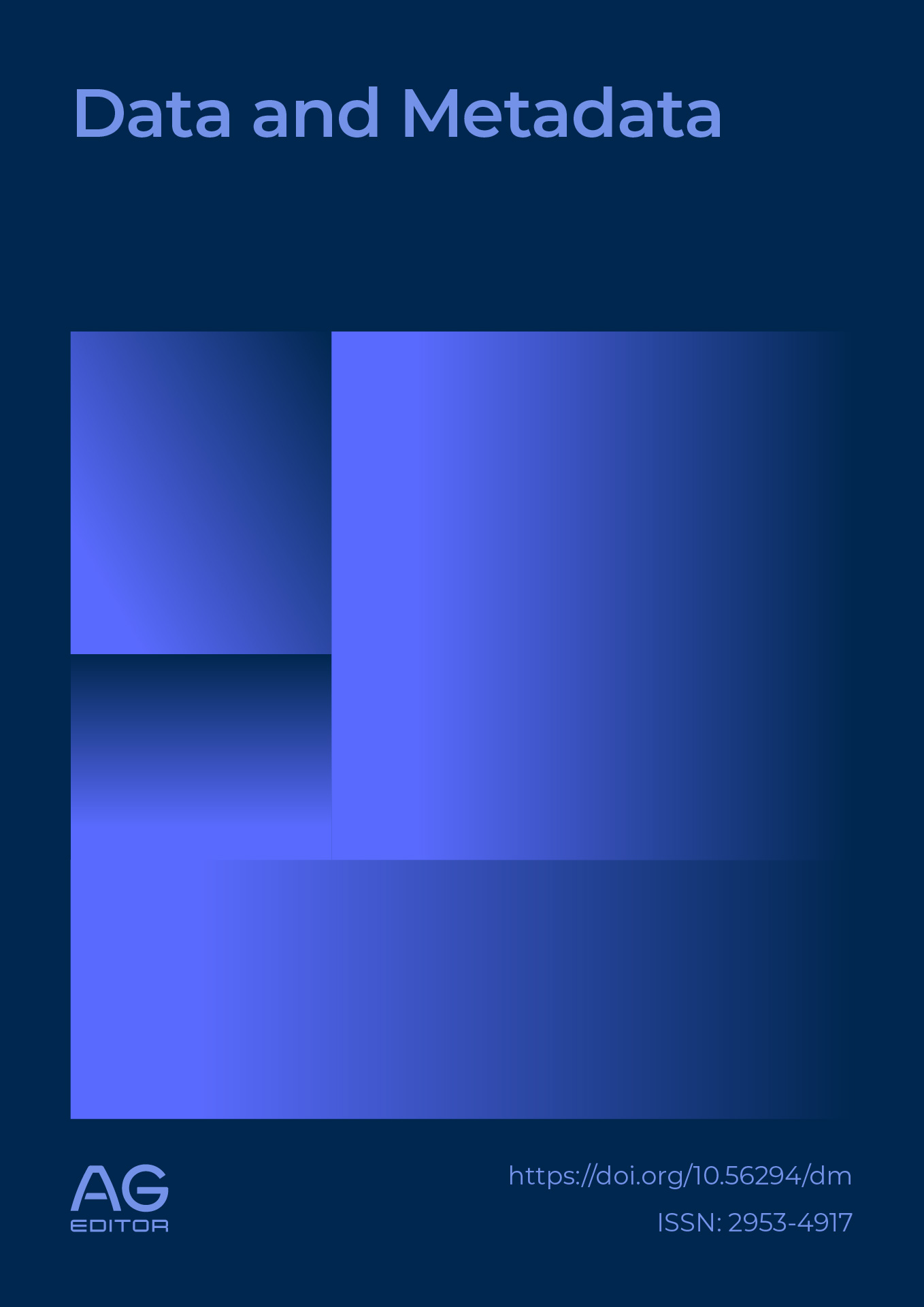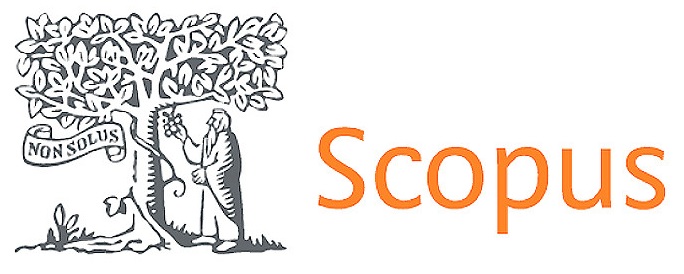Data ecosystem framework proposal to implement Food Informatics systems in agri-food chains
DOI:
https://doi.org/10.56294/dm2025572Keywords:
Data management, Integrated information system, Value chain data, Decision support systemsAbstract
Agri-food chains face permanent climate change, population growth, and water and input access challenges. These impact production, processing, and marketing processes, making the capture, processing, and analysis of the data generated by each link more complex, isolated, and independent. Extracting this information for intelligent analysis to allow the optimization of agri-food chains based on data analytics is called Food Informatics. The study paradigm has given rise to the concept of data ecosystems in agri-food chains. The aim of this study is to design a data ecosystem model for the implementation of Food Informatics systems in agri-food chains. The PRISMA methodology was implemented for the identification, screening, eligibility, and inclusion of studies from the Scopus and Clarivate databases. A total of 26 records were included in the in-depth analysis, identifying two data ecosystem types: those with integrated bidirectional views that facilitate link interoperability and others of an individual nature focused on one link. The proposed integrated data ecosystem model has as its core an ETL in GCP for Data Issued in Batches with a Data Catalog and Data Mesh-type structure, which integrates a physical and a digital layer and data infrastructure for storage, processing, visualization, curation, and interaction with the user
References
1. Fritter M, Lawrence R, Marcolin B, Pelletier NA. Survey of Life Cycle Inventory Database Implementations and Architectures, and Recommendations for New Database Initiatives. Int. J. Life Cycle Assess. 2020; 25: 1522–1531. DOI: https://doi.org/10.1007/s11367-020-01745-5
2. Krupitzer C, Stein A. Food Informatics—Review of the Current State-of-the-Art, Revised Definition, and Classification into the Research Landscape. Foods. 2021; 10: 2889. DOI: https://doi.org/10.3390/foods10112889
3. Marcelo MI, Barros Lima G de F, Farias Lóscio B. Investigations into Data Ecosystems: A Systematic Mapping Study. Springer London. 2019; 61. DOI: https://doi.org/10.1007/s10115-018-1323-6
4. Giorgio A, Penate Lopez LP, Bertoni D, Cavicchioli D, Ferrazzi G. Enablers to Digitalization in Agriculture: A Case Study from Italian Field Crop Farms in the Po River Valley, with Insights for Policy Targeting. Agriculture. 2024; 14: 1074. DOI: https://doi.org/10.3390/agriculture14071074
5. Ruan J, Wang Y, Chan FTS, Hu X, Zhao M, Zhu F, Shi B, Shi Y, Lin F. A Life Cycle Framework of Green IoT-Based Agriculture and Its Finance, Operation, and Management Issues. IEEE Commun. Mag. 2019; 57: 90–96. DOI: https://doi.org/10.1109/MCOM.2019.1800332
6. Roussaki I, Doolin K, Skarmeta A, Routis G, Lopez-Morales JA, Claffey E, Mora M, Martinez JA. Building an Interoperable Space for Smart Agriculture. Digit. Commun. Networks. 2023; 9: 183–193. DOI: https://doi.org/10.1016/j.dcan.2022.02.004
7. Pesonen LA, Teye FKW, Ronkainen AK, Koistinen MO, Kaivosoja JJ, Suomi PF, Linkolehto RO. Cropinfra - An Internet-Based Service Infrastructure to Support Crop Production in Future Farms. Biosyst. Eng. 2014; 120: 92–101. DOI: https://doi.org/10.1016/j.biosystemseng.2013.09.005
8. Poppe K, Vrolijk H, van Dijk R. Design of a System for Information Transfer to Reduce Administrative Burdens in the Agri-food Sector. Int. J. Food Syst. Dyn. 2021; 12: 301–313.
9. Tagarakis AC, Benos L, Kateris D, Tsotsolas N, Bochtis D. Bridging the Gaps in Traceability Systems for Fresh Produce Supply Chains: Overview and Development of an Integrated Iot‐based System. Appl. Sci. 2021; 11(6): 7596. DOI: https://doi.org/10.3390/app11167596
10. Bačiulienė V, Bilan Y, Navickas V, Civín L. The Aspects of Artificial Intelligence in Different Phases of the Food Value and Supply Chain. Foods. 2023; 12: 1654. DOI: https://doi.org/10.3390/foods12081654
11. Spanaki K, Karafili E, Sivarajah U, Despoudi S, Irani Z. Artificial Intelligence and Food Security: Swarm Intelligence of AgriTech Drones for Smart AgriFood Operations. Prod. Plan. Control. 2022; 33: 1498–1516. DOI: https://doi.org/10.1080/09537287.2021.1882688
12. Talaviya T, Shah D, Patel N, Yagnik H, Shah M. Implementation of Artificial Intelligence in Agriculture for Optimisation of Irrigation and Application of Pesticides and Herbicides. Artif. Intell. Agric. 2020; 4: 58–73. DOI: https://doi.org/10.1016/j.aiia.2020.04.002
13. Misra NN, Dixit Y, Al-Mallahi A, Bhullar MS, Upadhyay R, Martynenko A. IoT, Big Data, and Artificial Intelligence in Agriculture and Food Industry. IEEE Internet Things J. 2022; 9: 6305–6324. DOI: https://doi.org/10.1109/JIOT.2020.2998584
14. Al-Sarayreh M, Gomes Reis M, Carr A, Reis MM. dos Inverse Design and AI/Deep Generative Networks in Food Design: A Comprehensive Review. Trends Food Sci. Technol. 2023; 138: 215–228. DOI: https://doi.org/10.1016/j.tifs.2023.06.005
15. Buyuktepe O, Catal C, Kar G, Bouzembrak Y, Marvin H, Gavai A. Food Fraud Detection Using Explainable Artificial Intelligence. Expert Syst. 2023; 13387. DOI: https://doi.org/10.1111/exsy.13387
16. Dadhaneeya H, Nema PK, Arora VK. Internet of Things in Food Processing and Its Potential in Industry 4.0 Era: A Review. Trends Food Sci. Technol. 2023; 139: 104109. DOI: https://doi.org/10.1016/j.tifs.2023.07.006
17. Wu B, Gao B, Xu W, Wang H, Yi R P. Sustainable Food Smart Manufacturing Technology. Inf. Process. Manag. 2022; 59: 1–11. DOI: https://doi.org/10.1016/j.ipm.2021.102754
18. Grover J. Industrial IoT and Its Applications. In: IoT for Sustainable Smart Cities and Society. 2022; 107–124. DOI: https://doi.org/10.1007/978-3-030-89554-9_5
19. Redchuk A, Walas Mateo F, Pascal G, Tornillo JE. Adoption Case of IIoT and Machine Learning to Improve Energy Con-sumption at a Process Manufacturing Firm, under Industry 5.0 Model. Big Data Cogn. Comput. 2023; 7: 42. DOI: https://doi.org/10.3390/bdcc7010042
20. Treiblmaier H. The Impact of the Blockchain on the Supply Chain: A Theory-Based Research Framework and a Call for Action. Supply Chain Manag. An Int. J. 2018; 23: 545–559. DOI: https://doi.org/10.1108/SCM-01-2018-0029
21. Treiblmaier H, Garaus M. Using Blockchain to Signal Quality in the Food Supply Chain: The Impact on Consumer Purchase Intentions and the Moderating Effect of Brand Familiarity. Int. J. Inf. Manage. 2023; 68: 102514. DOI: https://doi.org/10.1016/j.ijinfomgt.2022.102514
22. Mohammed A, Potdar V, Quaddus M, Hui W. Blockchain Adoption in Food Supply Chains: A Systematic Literature Review on Enablers, Benefits, and Barriers. IEEE Access 2023; 11: 14236–14255. DOI: https://doi.org/10.1109/ACCESS.2023.3236666
23. Rajak ARA. Emerging Technological Methods for Effective Farming by Cloud Computing and IoT. Emerg. Sci. J. 2022; 6: 1017–1031. DOI: https://doi.org/10.28991/ESJ-2022-06-05-07
24. Duan P, Wang W, Zhang W, Gong F, Zhang P, Rao Y. Food Image Recognition Using Pervasive Cloud Computing. In Proceedings of the 2013 IEEE International Conference on Green Computing and Communications and IEEE Internet of Things and IEEE Cyber, Physical and Social Computing; IEEE. 2013; 1631–1637. DOI: https://doi.org/10.1109/GreenCom-iThings-CPSCom.2013.296
25. Guo Y, Chen Y, Wei W, Li H. Research on Food Recommendation Method Based on Knowledge Graph. In; 2023; pp. 521–533. DOI: https://doi.org/10.1007/978-981-99-2443-1_45
26. Gilal NU, Al-Thelaya K, Al-Saeed JK, Abdallah M, Schneider J, She J, Awan JH, Agus M. Evaluating Machine Learning Technologies for Food Computing from a Data Set Perspective. Multimed. Tools Appl. 2023; 83: 32041–32068. DOI: https://doi.org/10.1007/s11042-023-16513-4
27. Liu C, Cao Y, Luo Y, Chen G, Vokkarane V, Yunsheng M, Chen S, Hou P. A New Deep Learning-Based Food Recognition System for Dietary Assessment on An Edge Computing Service Infrastructure. IEEE Trans. Serv. Comput. 2018; 11: 249–261. DOI: https://doi.org/10.1109/TSC.2017.2662008
28. Akhtar MN, Shaikh AJ, Khan A, Awais H, Bakar EA, Othman AR. Smart Sensing with Edge Computing in Precision Agriculture for Soil Assessment and Heavy Metal Monitoring: A Review. Agricultur. 2021; 11: 475. DOI: https://doi.org/10.3390/agriculture11060475
29. Gai K, Fang Z, Wang R, Zhu L, Jiang P, Choo KKR. Edge Computing and Lightning Network Empowered Secure Food Supply Management. IEEE Internet Things J. 2022; 9: 14247–14259. DOI: https://doi.org/10.1109/JIOT.2020.3024694
30. Soltani Firouz M, Mohi-Alden K, Omid M. A Critical Review on Intelligent and Active Packaging in the Food Industry: Research and Development. Food Res. Int. 2021; 141: 110113. DOI: https://doi.org/10.1016/j.foodres.2021.110113
31. Ghaani M, Cozzolino CA, Castelli G, Farris S. An Overview of the Intelligent Packaging Technologies in the Food Sector. Trends Food Sci. Technol. 2016; 51: 1–11. DOI: https://doi.org/10.1016/j.tifs.2016.02.008
32. Carolan M. Automated Agri-food Futures: Robotics, Labor and the Distributive Politics of Digital Agriculture. J. Peasant Stud. 2020; 47: 184–207. DOI: https://doi.org/10.1080/03066150.2019.1584189
33. Iqbal J, Khan ZH, Khalid A. Prospects of Robotics in Food Industry. Food Sci. Technol. 2017; 37: 159–165. DOI: https://doi.org/10.1590/1678-457x.14616
34. Duong LNK, Al-Fadhli M, Jagtap S, Bader F, Martindale W, Swainson M, Paoli A. A Review of Robotics and Autonomous Systems in the Food Industry: From the Supply Chains Perspective. Trends Food Sci. Technol. 2020; 106: 355–364. DOI: https://doi.org/10.1016/j.tifs.2020.10.028
35. Hassoun A, Aït-Kaddour A, Abu-Mahfouz AM, Rathod NB, Bader F, Barba FJ, Biancolillo A, Cropotova J, Galanakis CM, Jambrak AR, et al. The Fourth Industrial Revolution in the Food Industry—Part I: Industry 4.0 Technologies. Crit. Rev. Food Sci. Nutr. 2023; 63: 6547–6563. DOI: https://doi.org/10.1080/10408398.2022.2034735
36. Li Y, Su DA, Mardani A. Digital Twins and Blockchain Technology in the Industrial Internet of Things (IIoT) Using an Extended Decision Support System Model: Industry 4.0 Barriers Perspective. Technol. Forecast. Soc. Change. 2023; 195: 122794. DOI: https://doi.org/10.1016/j.techfore.2023.122794
37. Orjuela-Garzon WA, Sandoval-Aldana A, Mendez-Arteaga JJ. Systematic Literature Review of Barriers and Enablers to Im-plementing Food Informatics Technologies: Unlocking Agri-Food Chain Innovation. Foods. 2024; 13: 3349. DOI: https://doi.org/10.3390/foods13213349
38. Verdouw CN, Robbemond RM, Verwaart T, Wolfert J, Beulens AJM. A Reference Architecture for IoT-Based Logistic Information Systems in Agri-Food Supply Chains. Enterp. Inf. Syst. 2018; 12: 755–779. DOI: https://doi.org/10.1080/17517575.2015.1072643
39. Saurabh S, Dey K. Blockchain Technology Adoption, Architecture, and Sustainable Agri-Food Supply Chains. J. Clean. Prod. 2021; 284: 124731. DOI: https://doi.org/10.1016/j.jclepro.2020.124731
40. Duncan SE, Zhang B, Thomason W, Ellis M, Meng N, Stamper M, Carneiro R, Drape T. Securing Data in Life Sciences—A Plant Food (Edamame) Systems Case Study. Front. Sustain. 2020; 1: 1–9. DOI: https://doi.org/10.3389/frsus.2020.600394
41. Allaoui H, Guo Y, Sarkis J. Decision Support for Collaboration Planning in Sustainable Supply Chains. J. Clean. Prod. 2019; 229: 761–774. DOI: https://doi.org/10.1016/j.jclepro.2019.04.367
42. Moher D, Liberati A, Tetzlaff J, Altman DG. Preferred Reporting Items for Systematic Reviews and Meta-Analyses: The PRISMA Statement. PLoS Med. 2009; 6: e1000097. DOI: https://doi.org/10.1371/journal.pmed.1000097
43. Caputo A, Kargina M. A User-Friendly Method to Merge Scopus and Web of Science Data during Bibliometric Analysis. J. Mark. Anal. 2022; 10: 82–88. DOI: https://doi.org/10.1057/s41270-021-00142-7
44. Aria M, Cuccurullo C. Bibliometrix: An R-Tool for Comprehensive Science Mapping Analysis. J. Informetr. 2017; 11: 959–975. DOI: https://doi.org/10.1016/j.joi.2017.08.007
45. Cobo MJ, López-Herrera AG, Herrera-Viedma E, Herrera F. An Approach for Detecting, Quantifying, and Visualizing the Evolution of a Research Field: A Practical Application to the Fuzzy Sets Theory Field. J. Informetr. 2011; 5: 146–166. DOI: https://doi.org/10.1016/j.joi.2010.10.002
46. Sittón-Candanedo I, Alonso RS, Corchado JM, Rodríguez-González S, Casado-Vara R. A Review of Edge Computing Ref-erence Architectures and a New Global Edge Proposal. Futur. Gener. Comput. Syst. 2019; 99: 278–294. DOI: https://doi.org/10.1016/j.future.2019.04.016
47. Pullo S, Pareschi R, Piantadosi V, Salzano F, Carlini R. Integrating IOTA's Tangle with the Internet of Things for Sustainable Agriculture: A Proof-of-Concept Study on Rice Cultivation. Informatics. 2024; 11. DOI: https://doi.org/10.3390/informatics11010003
48. Krisnawijaya NNK, Tekinerdogan B, Catal C, van der Tol R. Reference Architecture Design for Developing Data Management Systems in Smart Farming. Ecol. Inform. 2024; 81: 102613. DOI: https://doi.org/10.1016/j.ecoinf.2024.102613
49. Mohd Nizar NM, Jahanshiri E, Tharmandram AS, Salama A, Mohd Sinin SS, Abdullah NJ, Zolkepli H, Wimalasiri EM, Mohd Suhairi TAST, Hussin H, et al. Underutilised Crops Database for Supporting Agricultural Diversification. Comput. Electron. Agric. 2021; 180: 105920. DOI: https://doi.org/10.1016/j.compag.2020.105920
50. Talari G, Cummins E, McNamara C, O'Brien J. State of the Art Review of Big Data and Web-Based Decision Support Systems (DSS) for Food Safety Risk Assessment with Respect to Climate Change. Trends Food Sci. Technol. 2022; 126: 192–204. DOI: https://doi.org/10.1016/j.tifs.2021.08.032
51. Palocci C, Presser K, Kabza A, Pucci E, Zoani C. A Search Engine Concept to Improve Food Traceability and Transparency: Preliminary Results. Foods. 2022; 11: 1–13. DOI: https://doi.org/10.3390/foods11070989
52. Kassahun A, Tekinerdogan B. BITA*: Business-IT Alignment Framework of Multiple Collaborating Organisations. Inf. Softw. Technol. 2020; 127: 106345. DOI: https://doi.org/10.1016/j.infsof.2020.106345
53. Machado IA, Costa C, Santos MY Data Mesh: Concepts and Principles of a Paradigm Shift in Data Architectures. Procedia Comput. Sci. 2021; 196: 263–271. DOI: https://doi.org/10.1016/j.procs.2021.12.013
Downloads
Published
Issue
Section
License
Copyright (c) 2025 William Alejandro Orjuela-Garzón, Henry Cárdenas-Roa, Daniel Bustos-Vanegas, Juan Manuel Andrade-Navia (Author)

This work is licensed under a Creative Commons Attribution 4.0 International License.
The article is distributed under the Creative Commons Attribution 4.0 License. Unless otherwise stated, associated published material is distributed under the same licence.




